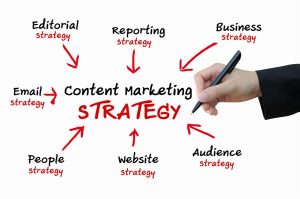When it comes to using digital marketing to grow your business, it is important to keep track of certain metrics.
After all, if you know how well a campaign is performing, you can either scale it up or make further optimization changes.
One of the simplest and most crucial elements to analyze is Return On Investment (ROI).
Why? Because it is the cornerstone of understanding which marketing activities are making you the most money and which ones aren’t doing well.
As soon as you’ve determined the activities that are costing you more than they are increasing sales, you can start to make informed decisions on how to best move forward with specific campaigns.
To help you understand the concept more completely, we’ve put together a brief guide on ROI.
Ready to get started? Let’s go.
- What is ROI?
- Why is ROI Important to Businesses?
- How to Calculate Return On Investment (ROI)
- After all, What is a Good ROI for a Business?
- Limitations of ROI
- Wrap Up
Download this post by entering your email below
What is ROI?
Return on Investment (ROI) is a calculation to determine how well a particular investment or series of investments is performing.
Understanding ROI is incredibly crucial in nearly all aspects of business, as it is a Key Performance Indicator (KPI) of whether a certain action is profitable or not.
Now, it is important to note what we mean when we use the term “investment” here.
An investment can be a specific paid advertising campaign, your website, your company’s trade show booth, or whatever other medium you’re spending money on to get more exposure.
It can also include the purchase of specified equipment to help your company increase sales volume.
Now, we do want to clarify a bit.
For purposes of this guide, we aren’t talking about financial investments, like stocks or bonds. But the idea still rings true for those items, as well.
Why is ROI Important to Businesses?
ROI is important to businesses because it shows whether or not the organization is making money on the various elements they’re spending capital on.
If a company has a negative Return On Investment, it could be seen as risky or not profitable.
Likewise, a positive ROI can signal growth and upward momentum.
In marketing, calculating and analyzing ROI is a major KPI of how well a campaign performs.
A high ROI means that the advertising channel brought in more sales than it cost to pay for the ad itself. In simpler terms, you made a profit off your ad.
Ultimately, that means a positive ROI is one of the biggest factors in determining whether your efforts were successful.
After you know this information, you can then use it to create a similar campaign or make changes to optimize it better for your overall target market.
How to Calculate Return On Investment (ROI)
In order to review your efforts, you need to learn how to calculate your ROI.
The basic formula is:

The best part about understanding this is that it is the same, no matter what type of investment you’re looking to analyze.
For example, it can be used to see if your Facebook ads campaign paid off in terms of eCommerce sales.
And the same formula can help you see if placing a billboard in your local area was profitable over time.
You can also use the ROI formula to determine your break-even point before you make a specific advertising investment.
To analyze this even further, we’re going to give you the exact steps in using an ROI calculation to determine marketing campaign profitability.
1. Determine investment value
The first step in discovering the ROI of a particular advertising campaign for your business is by figuring out the investment value.
This is essentially what your business earned from the overall campaign or your total profit before taking out expenses.
While we’ll address the cost to run the campaign in a different step, this is the time in which you need to tally up the sales made that come directly from running the campaign itself.
By using this total in the overall ROI calculation formula, you’ll be able to tell whether you have a positive or negative return.
Let’s use an example.
Susie runs a Facebook ad campaign for her local bakery that offers customers a special discount if they mention a special code word.
She makes $1,000 in sales from the advertising push. In this instance, her overall investment value would be $1,000.
2. Determine total cost of investment
This is the portion of the formula where we look at what it cost you to run the campaign in the first place.
Generally, this should be pretty easy to figure out, as it is directly tied to your ad spend.
You can choose to break down ad spend at a campaign level or into smaller micro-groups, like individual ad sets or landing pages.
Furthermore, you can even figure out ad spend on A/B testing by landing pages and other smaller elements.
The only thing you want to ensure is that your profit correlates to the exact investment cost you’re using in the formula.
If this isn’t something you can break down, then you might need to calculate your total cost as a different grouping.
Getting back to our example of Susie and her bakery. The Facebook ad that earned her all the new business cost her a total of $250.
3. Apply the overall ROI formula
Now we’re at the step where you actually apply the overall ROI formula.
Take the investment value and subtract the overall investment cost. Then you’ll take that number and divide it by your investment cost to get a percentage.
Ready to wrap up the example of Susie and her bakery?
$1,000 investment value – $250 Facebook ad cost = $750
$750 / $250 Facebook ad cost = 300%
In this case, Susie made an excellent profit off her marketing campaign… a whopping three times her investment!
While this is a basic example of what is a good ROI, sometimes the result isn’t always as profound.
Let’s assume Susie only made $150 off her $250 investment.
$150 investment value – $250 Facebook ad cost = – $100
– $100 / $250 = – 40%
Ouch! A Return On Investment in the negative means the overall campaign was not successful.
For an even simpler way to calculate your ROI, check out this interactive calculator:
[ion_script src=”https://ionfiles.scribblecdn.net/scripts/ionizer-1.4.2.min.js” hash=”eyJ1cmwiOiIvL2ludGVyYWN0aXZlLnJvY2tjb250ZW50LmNvbS9lbi9ibG9nL3JvaT9faW9uX3RhcmdldD1lbWJlZC0xLjAiLCJpZCI6Il9pb25faW9uaXplcl8xNjk3NDg2ODExOTMyIiwiZnVsbFNjcmVlbiI6ZmFsc2V9″]
After all, What is a Good ROI for a Business?
As you can see from the examples we’ve given, a good Return On Investment is anytime your investment value exceeds your expenses.
If this isn’t the case, then you’ve taken a loss and the campaign was a dud from a financial perspective.
So, how do you determine whether a campaign will give you a good ROI ahead of time?
It just depends on the industry you’re in and the advertising channel you’re engaging in.
Some combinations tend to be more profitable than others, which makes it crucial to know what’s normal for both your niche and the type of digital marketing campaign you’re running.
- In some industries, a positive ROI can be as high as 10 to 15%.
- For others, a 1 to 2% return is sufficient.
Again, it just comes down to your target market and overall digital advertising efforts.
What Is a Good ROI for Marketing?
A particular company generally sees a good return on its original marketing investments if its earnings exceed one dollar per every dollar invested.
However, there are many methods available to digital-age businesses, and some are significantly more expensive than others.
For example, television spots or print ads for new products can still cost a company many thousands of dollars to plan and produce.
However, options like content marketing and social media campaigns may be much more economical.
Keep careful track of the ROI attached to each type of marketing your company utilizes to determine which options are making the largest positive impact on your bottom line.
What Is a Good ROI for Advertising?
When spreading the word about your brand, building brand recognition, and otherwise advertising your company as an entity, a good ROI would be 25-50 percent on your original investment.
This is especially the case when it comes to popular advertising methods like pay-per-click Google ads.
You can best measure your advertising ROI by keeping careful track of where new leads are coming from (email outreach, Google Ads, etc.) and analyzing conversion profits attached to each option.
Do this even if you’ve elected to outsource your advertising to an agency.
What Is a Good ROI for an Agency?
If you run an agency (or are hoping to sometime soon), it’s worth noting that what constitutes a good ROI as far as the numbers can vary a lot from company to company.
An agency’s main objective is to ensure its clients turn a good profit and meet their goals.
For one client, a 5 percent ROI may be just fine, but another might be reaching for the stars and shooting for 20-25 percent.
When estimating potential ROI for a client, it’s crucial not to forget often overlooked expenses like inflation and taxes.
It’s also important to pay attention to opportunity cost when estimating ROI in any context, as taking one opportunity usually means passing on another that may be either more or less valuable.
Industries with the Highest ROI
Not all industries are equal when it comes to a variable concept like ROI. According to research by CSI Market, these industries enjoyed the highest overall ROI:
- The tech industry led the pack with 26.07 percent, followed closely by conglomerates with 17.7 percent.
- The finance and retail industries came in next with 11.91 percent and 11.79 percent, respectively.
- Basic materials and capital goods were next with 8.46 percent and 8.32 percent ROI, respectively.
- Healthcare came in at 7.36 percent ROI, followed closely by utilities with 6.42 percent.
It’s also important to note that the ROI for any industry will fluctuate along with factors like changing consumer tastes, evolving technologies, and competitors entering or leaving the market.
Limitations of ROI
Of course, calculating ROI isn’t always as simple as determining what your basic profit is minus your costs.
Sometimes, the investment value is greater than a simple profit and cannot be seen right away.
For example, let’s go back to Susie’s bakery.
Just because she had a few customers come in doesn’t mean that’s the only impact on her business.
Assume that five more customers saw the ad, but weren’t in the mood for sweets that day. All of them came into her shop after the promotion had ended, and one put in a specialty order for a $500 wedding cake.
As you can tell, that $500 would have had a huge impact on her ROI. But, it didn’t fall within the parameters of the overall campaign for calculating ROI.
This is what could be considered a limitation of using ROI to calculate the effectiveness of a digital marketing campaign.
While the final percentage gives you a good idea of the impact, it doesn’t always cover the full scope of the buyer’s journey.
Wrap Up
By keeping a close eye on your overall ROI, you can get a mostly accurate tally of how well a particular campaign or action was based on the end result.
In the end, this allows you to determine profit more effectively and make better projections about future campaigns.
Looking for an easier way to figure out how is the financial performance of your marketing?
Then check our marketing calculator that helps you define how much to invest and plan your budget!










